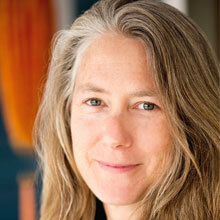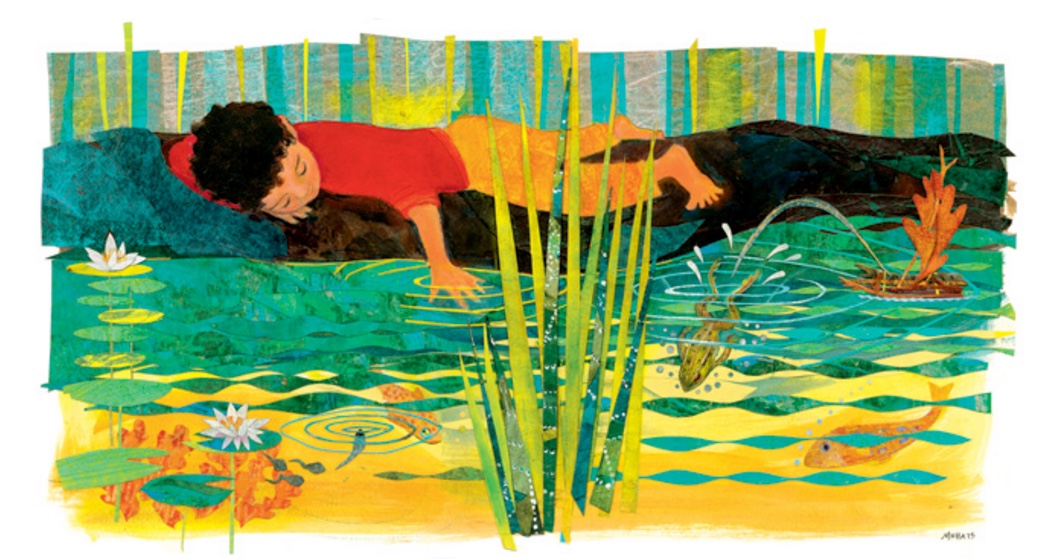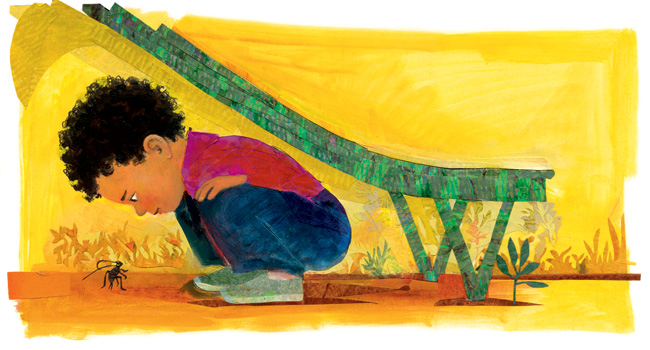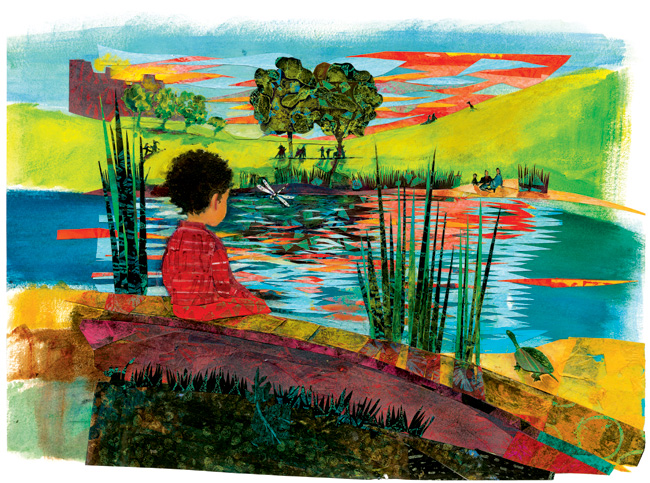New Illustrator Interview
Micha Archer: Daniel Finds a Poem

Collage is a challenge that keeps me interested. The serendipitous moment of discovering the perfect paper for the right purpose is my reward.
Interviewed by Margot Abel, Associate Director, Ezra Jack Keats Foundation
Daniel Finds a Poem is the first book you wrote as well as illustrated. How was the illustration process for Daniel different from creating images for another author’s text?
Easier and harder. Harder, because I had a tough author as a boss (me!) breathing down my neck the whole time. It makes me appreciate why editors don’t let the author and illustrator meet and argue about the details! Easier, because I could design the page myself, change things around, and most importantly, take out words in the text where pictures sufficed. I found the process of condensing the manuscript similar to the parsing and paring that I do in illustration and design.

How did you determine which materials and techniques you would use?
I chose collage and oil for Daniel. My art director and editor, Cecilia Yung and Nancy Paulsen, encouraged me to work in real collage as a opposed to digital collage. I am always glad to have an excuse to work away from my screen and to peel the glue off my fingers at the end of the day. I do the faces in oil, as I find it difficult to make the tender expressions in collage.
My collage process has two very different stages. The first is the spontaneous and freeing stage of creating a supply of homemade papers, like revisiting kindergarten. The second stage is the detailed, time-consuming, trial-and-error work of finding the right papers, the exacting cutting, and the sometimes terrifying moments of finally glueing something down. At the end of the day, there is a ring of confetti snips around my feet and stuck to the soles of my shoes.
 You are a former kindergarten teacher as well as a designer and illustrator. In your experience, what are some of the special ways young children decode illustrations?
You are a former kindergarten teacher as well as a designer and illustrator. In your experience, what are some of the special ways young children decode illustrations?
Children look closely at details, so in my book I tried to give them a lot to look at if they’re sitting on a lap. At the same time, it was important to me to make a book that could be seen from way back in the classroom. If it works and is readable from afar, you know it’s successful. My studio is in my house, and I can see my work from the kitchen. If it isn’t working from the kitchen, it’s back to the drawing board. Children want a clear message in both text and art.
Did Ezra Jack Keats influence you as you were developing your voice and style?
Yes, definitely. Especially as I was working on this book. His powerful but simple compositions are unafraid of giving full pages to a city wall or a snowy hill. This sensibility is a gift to any budding artist or designer. His pictures for The Snowy Day live in my memory and inform my work as much as any of the great masterpieces do. Little Peter’s journey alone in The Snowy Day was why I chose to have Daniel be on his own to find answers without a hovering adult. Daniel and Peter found joy in Nature right in their neighborhood.
 Children want to see themselves in books. I grew up in a small town and currently live in the woods, but my decision to set my story in a city park is a tribute to Ezra Jack Keats, who made books in which children who live in cities could feel seen and celebrated.
Children want to see themselves in books. I grew up in a small town and currently live in the woods, but my decision to set my story in a city park is a tribute to Ezra Jack Keats, who made books in which children who live in cities could feel seen and celebrated.
How do you think the EJK Book Award will affect your career as a book illustrator?
Just knowing that Ezra is watching over me is giving me comfort and confidence.
Do you have any advice for hopeful young illustrators?
Big picture: Work everyday, and be yourself. Your uniqueness is what will turn an art director’s head.
